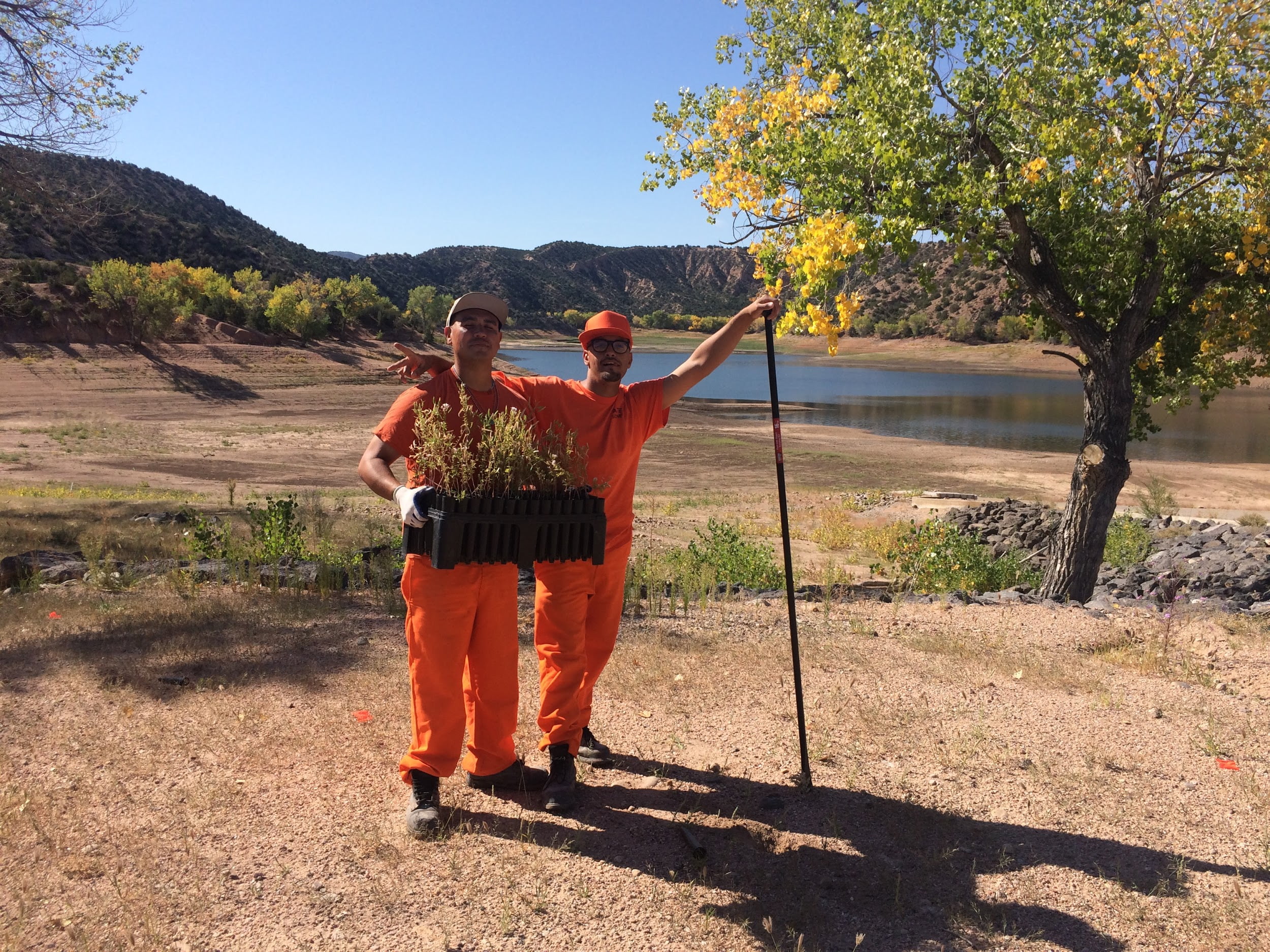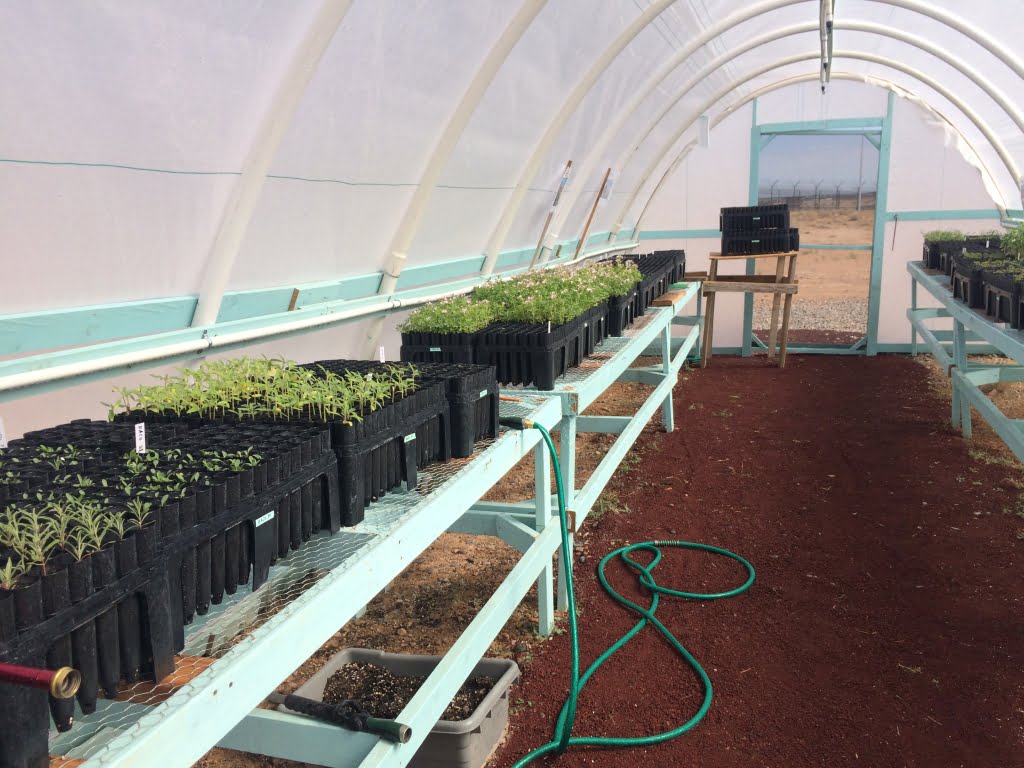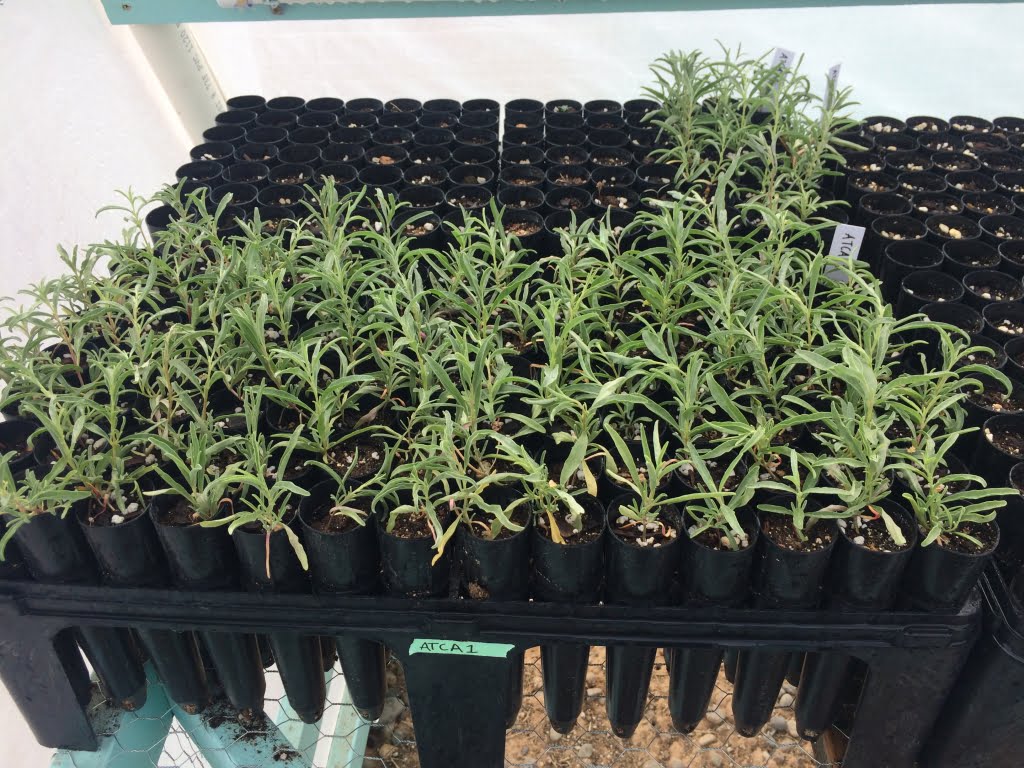
The New Mexico Nature in Prisons Project: A Successful First Year
By Ella Samuel, Melanie Gisler, & Lillis Urban
January 2019
More than 7,000 people are currently incarcerated in New Mexico state prisons, and this number is only projected to rise (See Source below; New Mexico prison population forecast, 2017). Despite a large and growing inmate population, New Mexico correctional facilities have few educational programs that support rehabilitation and reentry into civic life. Inspired by the Sagebrush in Prisons project, in January 2018 the Institute for Applied Ecology Southwest Office and Bureau of Land Management launched the New Mexico Nature in Prisons Project (NPP). This educational project and partnership with New Mexico correctional facilities and inmates is designed to support native plant restoration on public lands while simultaneously supporting rehabilitation and skill building for reentry in the areas of horticulture, conservation, and leadership. This project is customized to the local ecology, cultures, and inmate population needs.
In 2018, a permanent hoop house was built in April at the Penitentiary of New Mexico Minimum Restriction Unit (PNM MRU), where, with the help of inmates, we were able to grow thousands of seeds from local wild collections of shrubs and showy pollinator host plants. The shrub species included fourwing saltbush (Atriplex canescens), mountain mahogany (Cercocarpus montanus), winterfat (Krascheninnikovia lanata), and apache plume (Fallugia paradoxa); while the pollinator host forbs included common sunflower (Helianthus annuus), redwhisker clammyweed (Polanisia dodecandra), and upright prairie coneflower (Ratibida columnifera). This collaborative effort resulted in 5,000 plants, half of which were out-planted by PNM inmates and volunteers at BLM recreation sites near Taos and Chimayo, New Mexico, in the fall.
The NPP education and horticultural skill-building curriculum included presentations by 10 guest speakers on the topics of botany, ecology, horticulture, restoration, pollinators, and herbalism, as well as weekly hands-on plant care workshops widely offered to the PNM MRU community. Eighteen inmates participated in the education series and restoration planting days, and many more helped construct the hoop house. Participants provided highly positive feedback on end of program surveys. One participant reflected, "It was very exciting to learn about the different species of native plants and their importance in the ecosystem." Another participant said, “I am actually having fun!” We are so grateful to the inmates and staff members involved in the project who have made the program come alive this year.
It is exciting that major strides were made in just one year through this collaboration in all program areas: education, partnership, capacity building, production, and restoration. Plans for 2019 will expand the program to include construction of a cold frame, production of 5,000 more plants, installation of an ethnobotany garden, monitoring, and planting trials. We will also continue to provide meaningful opportunities for participants to learn about restoration by getting them out into natural areas to plant native species that they grew.
Please visit our webpage to learn more.
Source:
New Mexico prison population forecast: FY 2018―FY 2027. (July 2017). Retrieved from https://nmsc.unm.edu/reports/2017/new-mexico-prison-population-forecast-fy2018---fy2027.pdf


Restoration
Research
Education
Get Involved
Contact
Main Office:
4950 SW Hout Street
Corvallis, OR 97333-9598
541-753-3099
[email protected]
Southwest Office:
1202 Parkway Dr. Suite B
Santa Fe, NM 87507
(505) 490-4910
[email protected]
© 2024 Institute for Applied Ecology | Privacy Policy